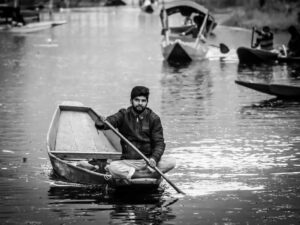Introduction: Why I Chose Hampta Pass
When I first heard about the Hampta Pass trek, it felt like an adventure waiting to unfold. This journey, which is tucked away in Himachal Pradesh’s magnificent scenery, provides varied terrain, exciting mountain pass crossings, and breathtaking views. But I quickly realized that to truly enjoy this incredible experience, I needed to prepare thoroughly. The anticipation of standing atop the pass, surrounded by towering peaks, fueled my excitement to get ready. Here’s how I got prepared for my unforgettable journey!
As I researched more about the trek, I found countless stories from fellow adventurers. Each tale spoke of not just the scenic beauty but also the camaraderie formed along the way. This inspired me to not only gear up physically but also mentally, ensuring I was ready to embrace every challenge and moment that the trek would offer.
Discovering the Magic of Hampta Pass Trek
Where Is Hampta Pass Trek? The Hidden Gem of Himachal Pradesh

Hampta Pass is a magical place, connecting the lush Kullu Valley with the stark beauty of Lahaul Valley. As I explored images online, I was captivated by the vibrant meadows, glistening streams, and snow-capped peaks that formed this enchanting landscape. Each step of the trek unveils jaw-dropping scenery, from vibrant meadows to towering peaks. It’s like walking through a painting!
The uniqueness of this trek lies in its diversity. One moment, I would find myself surrounded by thick forests, and the next, I would be gazing at rocky terrains and glacial rivers. This contrast kept my spirits high and my camera busy. I couldn’t wait to experience these stunning transformations in person.
Is It Tough? Understanding the Trek’s Difficulty
The trek is moderately challenging, and while it’s suitable for beginners, I knew that physical fitness would be key. I was ready to embrace the challenge, knowing it would be worth every effort! The paths vary from easy stretches to steep ascents, testing both my endurance and determination.
As I read up on the trek, I discovered that many trekkers had faced their fears and pushed their limits on this route. It inspired me to believe that, with preparation, I could conquer this journey, no matter how daunting it seemed. Every challenging ascent would bring me closer to the stunning views I had dreamed of.
When Should I Go? Timing My Adventure Right
After researching, I discovered that the best time to embark on this trek is between June and September. The good weather during these months makes trekking ideal. I marked my calendar and couldn’t wait!
However, I also learned that even within this window, weather conditions could vary greatly. I kept an eye on the forecasts, noting that early monsoon could bring rains, while later months could be drier but colder. Being flexible with my plans allowed me to embrace the adventure fully, no matter what Mother Nature had in store.
Getting Fit: My Physical Preparation Journey
Building Endurance: Cardio and Strength Training
To prepare, I committed to a fitness routine. I dove into cardio workouts—running, cycling, and even hiking on weekends. I tried to do cardio five days a week for at least thirty minutes. It felt exhilarating to see my stamina improve as I pushed myself harder each week.
Strength training was also crucial. I incorporated resistance exercises into my routine, focusing on my legs and core to support my body while carrying a backpack. I learned that building strength would not only help me conquer the trek but also protect against injuries.
Acclimatization: How I Prepared My Body for Altitude
After learning about altitude sickness, I realized I needed to acclimate. So, a week before the trek, I spent a couple of days at higher altitudes, hiking in the nearby hills. Staying hydrated and fueling my body with carbs helped me feel ready for the challenge.
I also practiced deep breathing techniques to help my body adapt to the thinner air. The more I educated myself about altitude, the more confident I felt. This preparation not only made me physically ready but also eased my mind about potential altitude-related issues.
Packing Smart: My Ultimate Gear Checklist
Dressing for Success: Layering Up
Packing for the Hampta Pass trek was an adventure in itself. I learned the importance of layering. I brought along a thick fleece, a waterproof jacket, and a moisture-wicking base layer. Don’t forget a cozy hat and gloves!
One of my key takeaways was the importance of choosing the right materials. I opted for breathable fabrics to manage sweat and avoid overheating. I also made sure to pack an extra layer for the chilly evenings, ensuring I stayed warm while camping under the stars.
Finding the Right Footwear
My trekking boots were a crucial investment. I tried on several pairs before finding the perfect fit—supportive, comfortable, and rugged. I made sure to break them in with shorter hikes to avoid blisters.
During my training hikes, I learned the value of good traction. As I trekked through different terrains, I realized that the right boots not only provided comfort but also confidence to tackle tricky paths. My choice of footwear was going to be my best friend on this journey!
Camping Essentials: What I Took Along
If you plan to camp, you’ll need some gear. I packed a lightweight tent, a sleeping bag rated for cold weather, and a comfortable sleeping pad. Make sure you get a decent night’s sleep; don’t cut corners!
I also included a portable stove for cooking hot meals, which can be a game-changer after a long day of trekking. Preparing a simple meal in the wilderness became a delightful experience, making every campfire moment special.
Safety First: My Approach to Staying Secure
Staying Aware of Weather Changes
The mountains can be unpredictable. I learned to check the weather forecasts daily and prepare for anything—sun, rain, or even snow!
I also packed a lightweight poncho to stay dry during unexpected showers. Knowing how to adapt to changing weather made me feel more secure and allowed me to enjoy the trek without anxiety.
My First-Aid Kit Must-Haves
A well-stocked first-aid kit was a must. I packed band-aids, antiseptic wipes, pain relievers, and altitude sickness medication. Knowing how to handle minor injuries made me feel more secure.
I also included items like blister pads and anti-inflammatory cream, which became lifesavers during the trek. My preparation instilled confidence, allowing me to focus on the beauty around me rather than worrying about potential mishaps.
Planning the Itinerary: Mapping Out My Adventure
Crafting My Perfect Itinerary

I laid out a detailed itinerary, planning to start at Jobra and stop at enchanting spots like Chika and Balu Ka Ghera before reaching Hampta Pass. Allowing for extra days helped me soak in every moment.
As I researched, I discovered that each camp offered unique experiences, from stunning sunsets to starry nights. Planning my stops became an exciting part of the journey, and I couldn’t wait to experience each new view.
Must-See Stops Along the Trail
Each stop had its own charm, from stunning vistas to serene campsites. I made sure to take plenty of photos and savor the local flavors.
Connecting with fellow trekkers during breaks enriched my journey. Sharing stories and laughter around the campfire made each evening memorable and created bonds that extended beyond the trek.
Navigating the Trail: My Tips for Success
Staying on Course: Maps and Navigation
I knew that having a reliable map was crucial. I downloaded offline maps to my phone and familiarized myself with the route. A local guide was a great option if I felt uncertain.
I also practiced basic navigation skills, learning how to read the terrain and use landmarks for guidance. This knowledge made me feel more capable and empowered to tackle the trail confidently.
To Guide or Not to Guide? My Choice
While some trekkers prefer to go solo, I decided to hire a local guide. Their knowledge of the area added so much to my experience. Plus, it felt safer to have someone familiar with the terrain.
Having a guide meant I could learn more about the culture, flora, and fauna of the region. Their insights turned each day into a rich educational experience, deepening my appreciation for the journey.
If you’re looking for an unforgettable adventure, I highly recommend The Searching Souls They specialize in trekking experiences and offer expertly guided tours through the stunning landscapes of the Hampta Pass Trek. Their knowledgeable guides ensure safety and provide valuable insights about the region, making your journey both enjoyable and educational.
Respecting Nature: My Commitment to the Environment
Practicing Leave No Trace Principles
As I trekked, I made a vow to leave no trace. Carrying out all my waste and respecting the environment became a personal mantra.
I also took time to educate fellow trekkers about these principles, fostering a sense of community responsibility. It felt rewarding to contribute positively to the environment while enjoying the beauty of nature.
Connecting with Local Culture
I took the time to engage with local communities, learning about their traditions. This added depth to my journey and made it even more memorable.
Participating in local customs, tasting regional foods, and hearing stories from the residents enriched my experience, reminding me of the rich tapestry of culture that exists alongside nature.
Conclusion: All Set for an Once-in-a-Lifetime Adventure
Preparing for the Hampta Pass trek was a journey in itself, filled with anticipation and excitement. By focusing on physical fitness, gathering the right gear, and planning meticulously, I was set for an adventure I would never forget. As I looked forward to standing at the pass, I knew that every step of preparation had been worth it.
The memories of breathtaking views, new friendships, and the thrill of conquering challenges made every ounce of effort worthwhile. I was very excited to start this amazing experience!
FAQs
What is the Hampta Pass trek?
The Hampta Pass trek is a scenic trail in Himachal Pradesh that connects Kullu Valley and Lahaul Valley, offering breathtaking views.
How difficult is the trek?
It’s moderately challenging, ideal for beginners willing to train and prepare properly.
What is the best time to go?
The best time to trek Hampta Pass is from June to September, when the weather is milder.
Can beginners attempt this trek?
Absolutely! With the right preparation and fitness, beginners can successfully tackle this trek.
What should I do in case of altitude sickness?
If you feel symptoms of altitude sickness, descend to a lower altitude, hydrate, and seek medical assistance if necessary.












